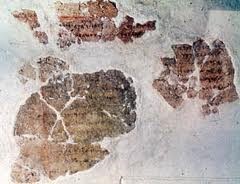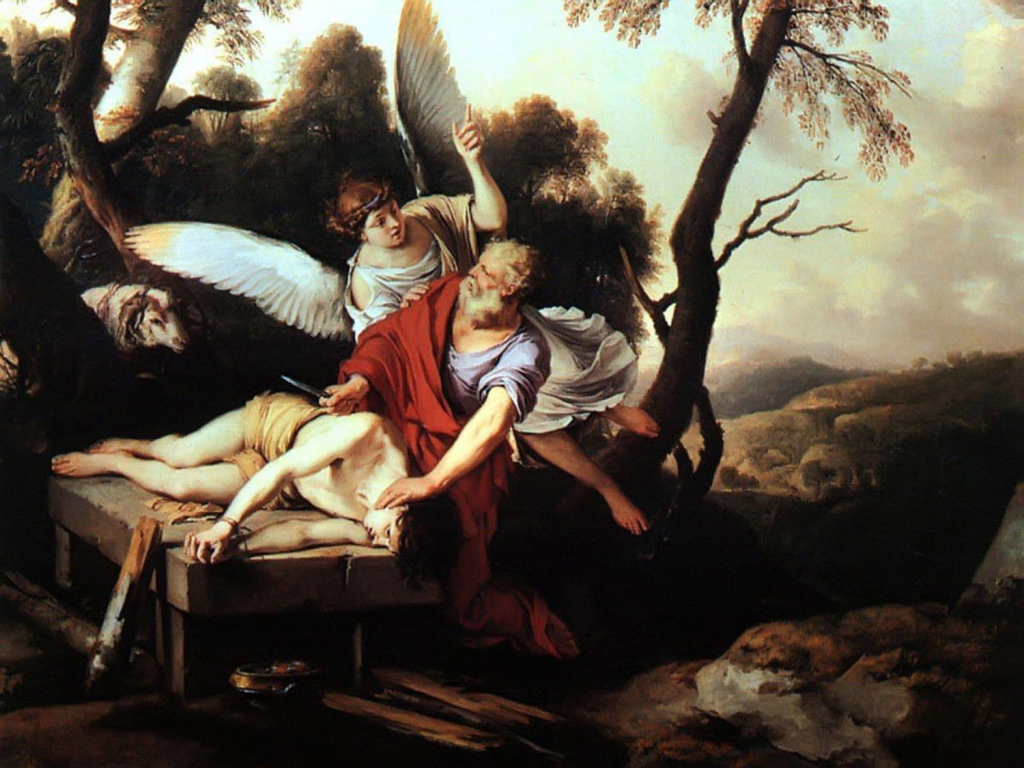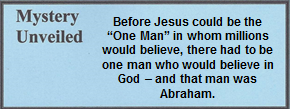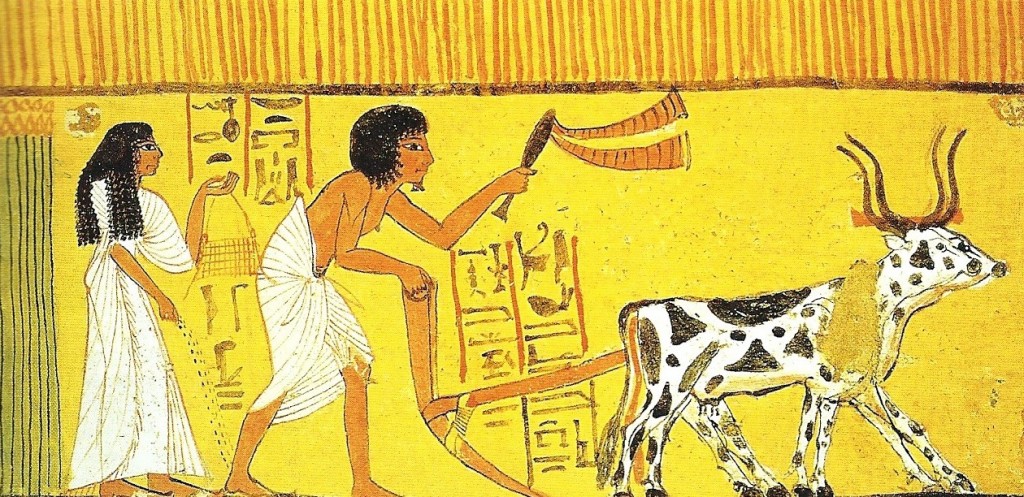03.01.05 1446 B.C. The Exodus; the Torah; Moses and Balaam Predict the Redeemer
As the adopted son of Pharaoh, Moses was privileged to receive the highest level of education (Acts 7:22) as well as leadership and military training. He was familiar with the Egyptian holy books, including the Papyrus Ebers,[1] and the political and religious systems of his day. Josephus recorded some of his military adventures.[2] The Exodus story of the Israelite children in Egypt and how Moses delivered them from slavery has been repeated for centuries. The celebration of deliverance from death that occurred at this time became known as the Passover. Moses was chosen by God to lead His people through the Red Sea, out of Egypt, and to the Promised Land of Canaan. This event became symbolic of how Jesus would lead humanity out of the slavery of sin into a new freedom in Himself.[3] Among his works is this verse that was considered prophetic of the coming Messiah by the Jews.
The Scepter will not depart from Judah
Or the staff from between his feet
Until He whose right it is comes
And the obedience of the peoples belongs to Him
Genesis 49:10
Moses was personally given the Ten Commandments from God on Mount Sinai. Later he wrote the first five books of the Hebrew Bible that includes history as well as the Mosaic laws. These laws are foundational to the faith of Jews, Samaritans, and Christians. The Torah is considered to be the most sacred of all Jewish writings. The fact that Jesus often made reference to the Torah is indicative of its continued importance.
Due to the many similarities of his life and accomplishments, Moses is seen today by Christians as a “type and shadow” of Jesus.[4] However, to first century Jews, their concept of a Messiah according to Deuteronomy 18:15 was someone who would be like Moses. The key word is “like” which does not mean “identical to,” so when Jesus arrived on the scene, they had difficulties accepting Him.
The Lord your God will raise up for you a prophet like me from among your own brothers. You must listen to him.
Deuteronomy 18:15[5]
In his history of the Israelites, later known as “Jews,” Moses mentioned a pagan prophet (or seer) by the name of Balaam. Moses recorded a prophecy given by Balaam in the book of Numbers that would become significant to the Parthian magi centuries later. An interesting event happened when Balaam, believed he had sufficient demonic powers to curse the Israelites and manipulate their God. So when he was asked by an enemy to curse them, God intervened and told him to bless the Israelites instead, curse the enemy who made the request, to and give a prophecy that is recorded in Numbers 24:17 concerning a future Redeemer. It reads,
I see him, but not now;
I perceive him, but not near.
A star will come from Jacob,
And a scepter will arise from Israel.
He will crush the forehead of Moab,
And strike down all the Shethites.
Numbers 24:17
To first century Jews, no biblical figure was of greater significance in the affairs of daily life than was Moses. All religious rites and beliefs began with his writings. He recorded the Mosaic Code (Ten Commandments, and the 613 laws affecting all areas of life).[6] By the first century, however, these laws had taken a secondary position to the Oral Law. Therefore, the major conflict between Jesus and the Pharisees was because Jesus held the Mosaic Code in the superior position, while the Pharisees held their Oral laws in superior position. On an important side note, the Church has adopted a Roman view of Law, in that it means restriction and therefore, bad, while the Hebrew Bible views Law as Instruction and freedom and, therefore, good.
However, because Moses had written these three messianic passages (Gen. 49:10; Deut. 18:15; Num. 24:17), not only were first century Jewish people waiting for a messiah, but for the previous fifteen centuries, wherever they wandered, they told others of the coming messiah. As will be seen, the second and first century B.C., people everywhere in the ancient Middle East were expecting Him, including the three magi who came from the east.
Now concerning the non-Israelite prophet, some critics have discounted the Balaam account as mythological folklore, saying that he never existed. However, in 1967 archaeologists digging in Deir’ Alla in Western Jordan, made an interesting discovery of a temple. These ancient ruins are situated about five miles east of the Jordan River and less than one mile north of the Jabbok River. Evidently the ancient seer had incredible fame. Josephus said he lived by the Euphrates River,[7] yet he was remembered and honored centuries later and hundreds of miles to the west. In these ruins a painted inscription was found of a prophecy given by the same Balaam mentioned in Numbers 22-24 by Moses. This prophecy is considerably different from the biblical narrative, but it does make reference to the “Shaddai gods,” which is close to the Hebrew El Shaddai, meaning “God Almighty.” This inscription was dated to 840 – 760 B.C., and portions of it are, understandably, missing while others are difficult to read. However, various sections are of sufficient quality that, with sophisticated scientific equipment, could be read and was translated as follows:
1 [VACAT] The sa]ying[s of Bala]am, [son of Be]or, the man who was a seer of the gods. Lo! Gods came to him in the night [and spoke to] him 2according to these w[ord]s. Then they said to [Bala]am, son of Beor, thus: “Let someone make a [ ] hearafter, so that [what] you have hea[rd may be se]en!” 3 And Balaam rose in the morning [ ] right hand [ ] and could not [eat] and wept 4aloud. Then his people came in to him [and said] to Balaam, son of Beor, “Do you fast? [ ] Do you weep?” And he 5said to them, “Si[t] do]wn! I shall inform you what the Shad[dayin have done]. Now come, see the deeds of the g[o]ds!. The g[o]ds have gathered 6and the Shaddayin have taken their places in the assembly and said to Sh[slave, thus:] ‘Sew the skies shut with your thick cloud! There let there be darkness and no 7perpetual shining and n[o] radiance! For you will put a sea[l upon the thick] cloud of darkness and you will not remove it forever! For the swift has 8reproached the eagle, the voice of vultures resounds. The st[ork has ] the young of the NHS-bird and ripped up the chicks of the heron. The swallow has belittled 9the dove, and the sparrow [ ] and [ ] the staff. Instead of ewes the stick is driven along. Hares have eaten 10 [ ]. Freemen [] have drunk wine, and hyenas have listened to instruction. The whelps of the 11 f[ox] laughs at wise men, and the poor woman has mixed myrhh, and the priestess 12 [ ] to the one who wears a girdle of threads. The esteemed esteems and the esteemer is es[teemed. ] and everyone has seen those things that decree offspring and young. 15 [ ] to the leopard. The piglet has chased the young 16[of] those who are girded and the eye ….’”
Balaam Deir Alla Inscription.[8]
“Balaam, son of Beor.” Balaam must have been a prophet of excellent reputation, in that kings consulted him and asked him to curse enemies prior to war.[9] The ruins of Tel Deir ‘Alla revealed archaeological evidence of Balaam’s existence. Archaeologists believe that originally there was a long narrative on the wall with a minimum of fifty lines of writing. While portions were destroyed by earthquakes, among the 119 remaining plaster fragments with red and black writings the name of a prophet Balaam, son of Beor” is mentioned three times – just as mentioned in the Bible.[10] But most important, his prophecy of biblical record (Num. 24:17) was responsible for the eventual visit by the Parthian magi to Jesus, and in part, the anticipation of a Messiah by Jewish people.
“The Shaddayin.” Some scholars believe these were deities of the pagan world.[11]

03.01.05.A. PLASTER FRAGMENTS OF THE BALAAM TEL DEIR ‘ALLA INSCRIPTION. Sufficient plaster fragments with inscriptions were discovered in Deir ‘Alla, Western Jordan, to authenticate the existence of a non-Israelite prophet by the name of Balaam. Photo by Google Images.[12]
[1]. The Papyrus Ebers, written about 1552 B.C., contains over eight hundred prescriptions and remedies for various human aliments. Egyptian physicians were highly skilled in diagnosing illnesses, but their prescriptions of primitive superstitions were deadlier than the illnesses they tried to cure. The directives for cleanliness prescribed by Moses were radically different than that of the Egyptians or Babylonians. Obviously, this is indicative of a different source of information. Furthermore, he did not include any directions to perform exorcisms and incantations as were popular among the Egyptians. See Ben Hobrink, Modern Science in the Bible. 2-3, 5. As a whole, the Egyptian worldview was focused on death, and the worship of deities controlled life and death.
[2]. Josephus, Antiquities 2.10.1.
[3]. See Appendix 3.
[4]. See Appendix 2 and 26; an example of “type and shadow” is found in Hebrews 10:1a, “Since the Law has only a shadow of the good things….”
[5]. Emphasis mine.
[6]. The 613 laws were observed only during the times of the tabernacle or temple. Today, only 271 of those Mosaic commands can be observed. See Parry, The Complete Idiot’s Guide to the Talmud. 221.
[7]. Josephus, Antiquities 4.6.1.
[8]. Translation published by P. Kyle McCarter Jr. “The Balaam Texts from Deir ‘Alla: The First Combination.” Bulletin of the Schools of Oriental Research. 239 (1980). 49-60; http://en.wikipedia.org/wiki/Deir_Alla_Inscription. Retrieved November 10, 2012.
[9]. Balaam is also mentioned negatively in 2 Peter 2:14-15 and Revelation 2:14.
[10]. Fruchtenbaum, The Jewish Foundation of the Life of Messiah: Instructor’s Manual. Class 4, page 9.
[11]. http://jewishchristianlit.com/Texts/ANEproph/aneBalaam.html. Oracle of Balaam translated by Gildas Hamel. Retrieved July 18, 2014.
[12]. https://www.google.com/#hl=en&sugexp=les%3B&gs_nf=3&gs_mss=deir%20alla%20i&tok=M_9W2yMghuzYK2vUSojXkQ&pq=deir%20alla%20inscription%20wiki&cp=15&gs_id=25&xhr=t&q=deir+alla+image&pf=p&tbo=d&sclient=psy-ab&oq=deir+alla+image&gs_l=&pbx=1&bav=on.2,or.r_gc.r_pw.r_qf.&fp=74f684b921f60f2b&bpcl=38093640&biw=2025&bih=999. Retrieved November 10, 2012.



